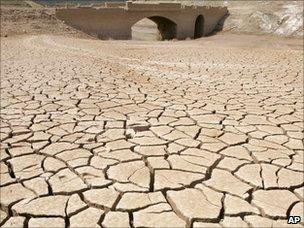Last blocks net addresses set to be shared
- Published

The internet has taken a big step closer to running out of addresses.
In the early hours of 1 February, the organisation that oversees net addresses in the Asia Pacific region put in a request for more addresses.
When these are handed over the central pool of net addresses will be down to its last five blocks of 16 million addresses each.
When those five run out in the Autumn there will be no more of the current generation of addresses available.
Urgent request
The request for addresses was made by the Asia Pacific Network Information Centre (APNic) as it has almost come to the end of its current allocation of IP Version 4 (IPv4) addresses.
A policy drawn up by the Internet Corporation for Assigned Names and Numbers (Icann) states that when only five blocks of addresses remain they will be quickly distributed to regional agencies.
A ceremony to mark the handing over of the last five blocks of addresses, known as /8s, is set to take place on February 3rd.
Drawn up in the 1970s, IPv4 has room for about 4.3 billion addresses. The rapid growth of the net has quickly depleted that stock and the entire address space is expected to be exhausted by September 2011.
A replacement scheme, IPv6, has been drawn up that has trillions of addresses available but progress towards using it has been slow.
"The future growth and innovation of the internet is now reliant on deployment of IPv6," said Axel Pawlik, managing director of Ripe, which oversees net address in Europe.
"It is now more vital than ever that ISPs, organisations, governments and all other internet stakeholders begin to deploy IPv6," he said.
- Published28 January 2011
- Published11 November 2010
- Published13 January 2011
- Published30 November 2010